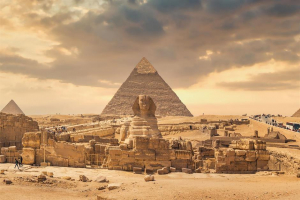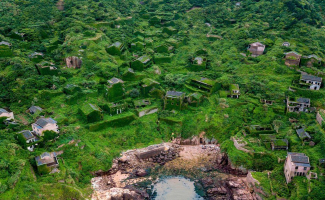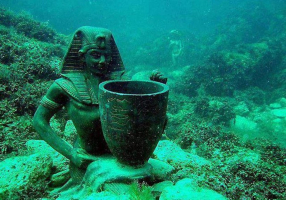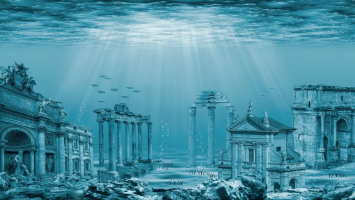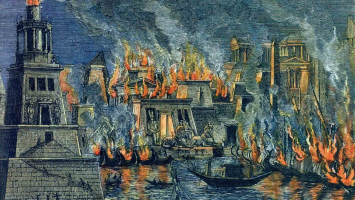Top 10 Mysterious Lost Civilizations That Once Existed
Throughout the course of human history, great civilizations have been built, developed, and declined. Many of these civilizations have been well documented by ... read more...historians, and later civilizations have been able to trace their rise and fall. But mysterious lost civilizations that once existed. Some civilizations left clues as to what caused their demise, while the disappearance of others remains a mystery.
-
The Mayan Civilization is a classic example of one of the mysterious lost civilizations that once existed. Its greatest monuments, its towns, and roads were swallowed up by the jungle of Central America and its population was dispersed in small villages. The Mayan language and traditions persist to this day, but the peak of the civilization occurred during the first millennium AD when their greatest architectural monuments were discovered. The Yucatan construction and countryside cover a large area, going from Mexico to Guatemala and Belize.
One of the greatest lost civilizations in the Mesoamerican, the Mayan Civilization used writing, mathematics, developed calendars, and complex techniques to build pyramids and terraced farms. The reason for the disappearance of this very advanced civilization is one of the great debates in archeology. It was thought that infighting, combined with climate change in the Yucatan around AD 900, would weaken crops and create famines that resulted in cities being abandoned. The Mayans were quite advanced, exhibiting respectable technical skills and using complex mathematics. Archaeologists now believe that the Mayans were victims of an ongoing war coupled with climate change that led to famine, and forced migration from their largest cities. Rural decline, resulting in diminishing resources, may also play a role.
- Time: 2600 BC
- Location: Central America
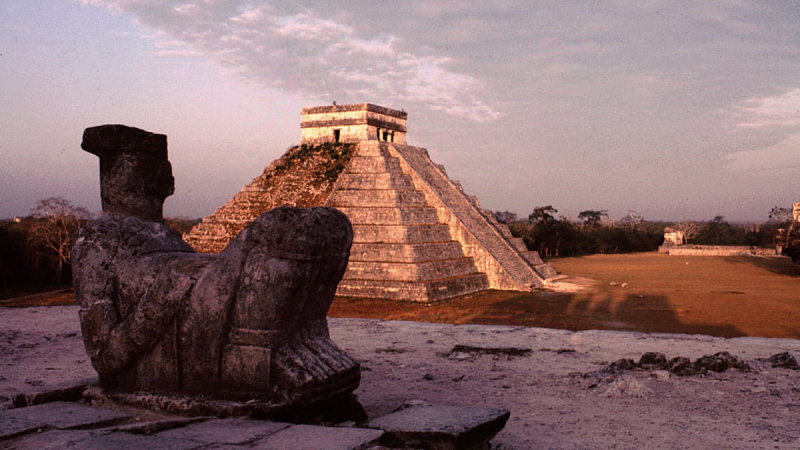
Source: discovermagazine.com 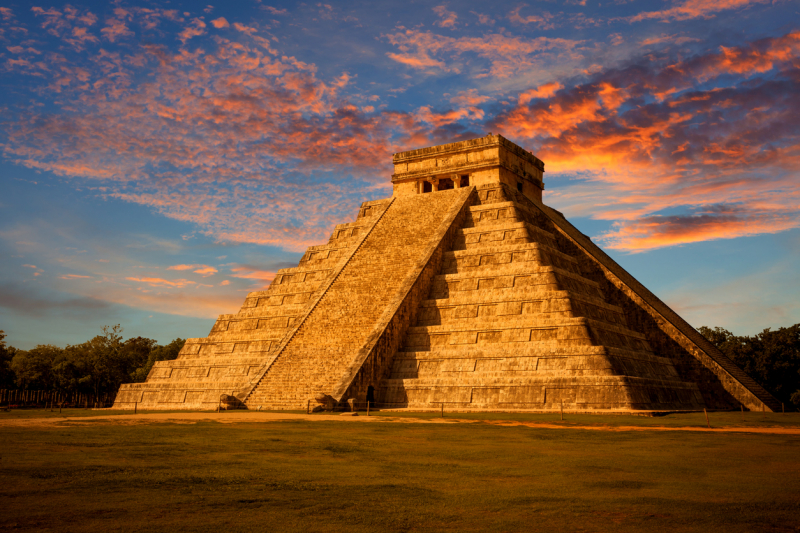
Source: historyonthenet.com -
The Khmer empire, one of the most powerful empires and the largest loss of civilization, in Southeast Asia, the region occupied today is Cambodia for Laos, Thailand, Vietnam, Myanmar, and Malaysia. This is one of the mysteriously lost civilized that once existed. Angkor, the capital, became one of the most famous archaeological sites in Cambodia. This empire, consisting of one million people, developed strongly in the first millennium. The Khmer follow Hinduism and Buddhism and have built other complex temples, towers, and architectural works such as Angkor Wat, a temple of Vishnu. The decline of the Khmer empire is due to a combination of some factors. Although most believed that they were invaded by Khmer people to create favorable conditions for transporting goods and army across the empire.
On the other side of the world, the Khmer empire has spread in Cambodia today. Angkor is one of the largest cities of civilization, with a wide range of roads and canals and an estimated population of up to one million people. The Khmer empire was in the peak period between 1000 - 1400AD, and experts were not sure what made this civilization disappear, leaving its cities under the devastation of the jungle. Theories include war to environmental disasters.
- Time: 1000 - 1400 AD
- Location: Cambodia
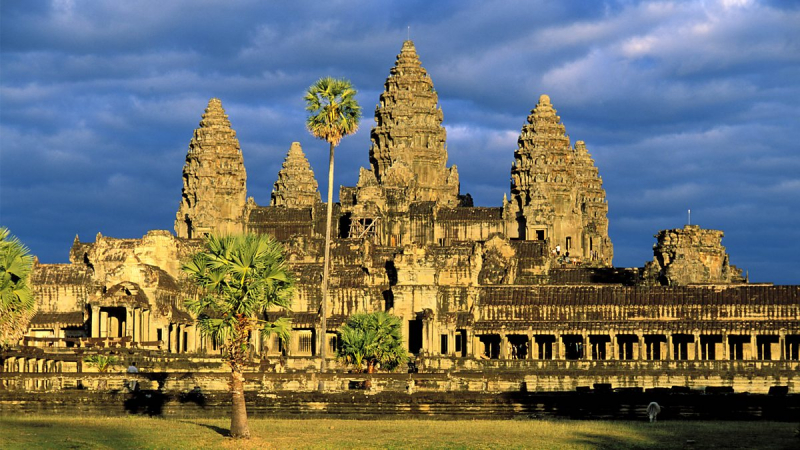
Source: donlehmanjr.com 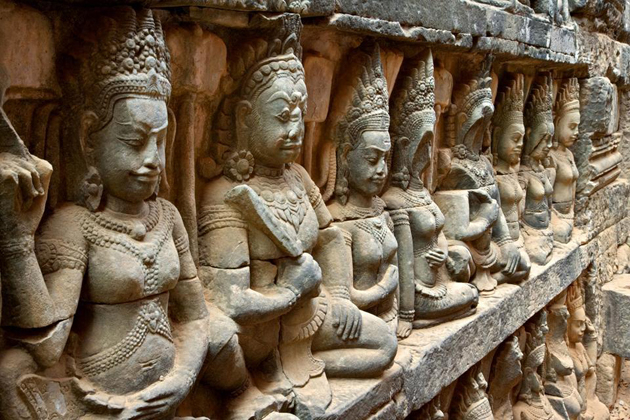
Source: thoughtco.com -
The Indus civilization is one of the huge missing civilizations spread across an area where Pakistan and Western India are now. It is one of the most important ancient civilizations. But few people know about them, mainly because no one has deciphered their language. People have built more than a hundred towns and villages, including Harappa and Mohenjo-Daro cities. Each area has a sewage drainage system and a private sanitary system. It seems that this civilization has no class and no excellent army in the field of astronomy and agriculture. This is also the first civilization to produce clothes with a cotton cloth. This civilization disappeared 4,500 years ago and no one knew about it until the ruin was excavated in the 1920s. Some theories try to explain this disappearance, such as the changes in their environment as dry as the Ghaggar Hakra river, and the temperature is colder and drier. Another hypothesis is that the Aryans invaded the area around 1500 BC.
Indus civilization, also known as the Harappan civilization, is one of the biggest civilizations in ancient history, stretching to the regions of India, Pakistan, and Afghanistan and up to five million people. At the peak period, this civilization is proud to have some of the most impressive architecture in the world, among other achievements. A hypothesis is that it is a victim of climate change that leads to drought and hunger. This is an indispensable civilization in the list of mysteriously lost civilized that once existed.
- Time: 3300-1300 BC
- Location: Pakistan
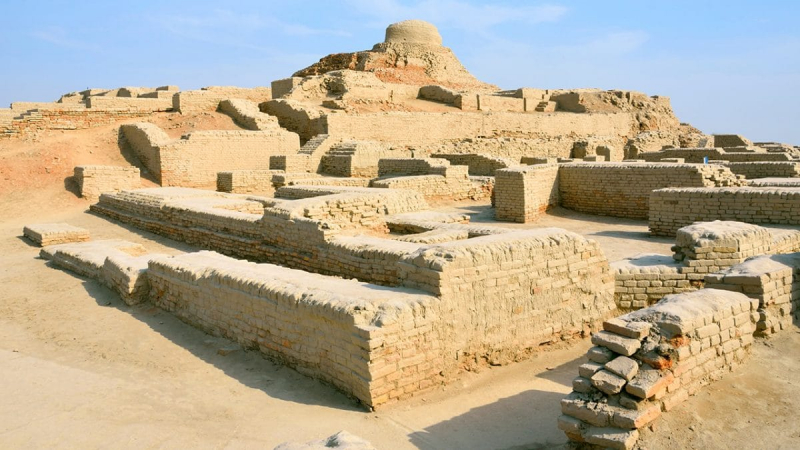
Source: worldhistory.org 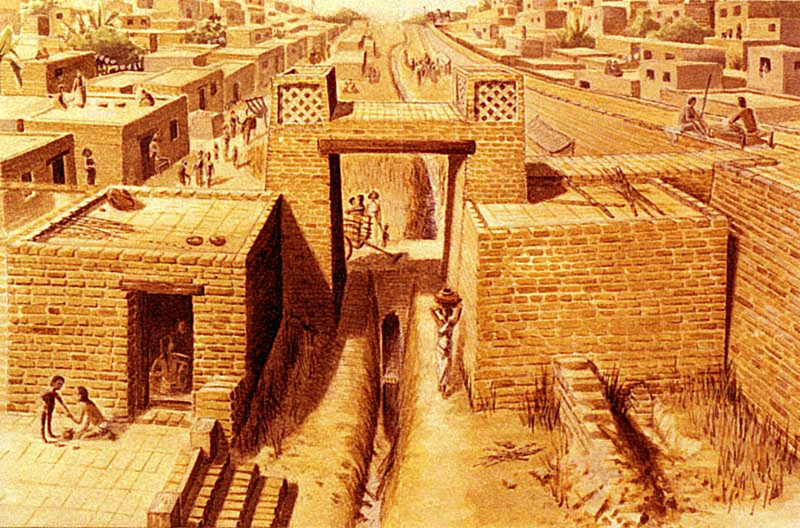
Source: khanacademy.org -
Famous for the giant rock heads along the coast, Easter Island (Rapa Nui) is the place where Polynesia civilization thrives, first settled on the island around 700 CN. Its residents are skilled in sea navigation and other advanced capabilities. Some speculate that natural resources are decreasing, which can lead to the decline of civilization. Diseases and other factors may also play a certain role. This is a mysteriously lost civilization that once existed.
On the canoe, Polynesia somehow found and settled on Easter Island, one of the most remote places in the world, located about 2,300 miles from Chile to the west. Even more noticeable, despite the lack of wheels or no animal packaging - much more cranes - they still built hundreds of giant stone statues, called moai, the largest statue of 32 feet and heavy at 82 tons. However, by the 1800s, every statue was overthrown, the population collapsed and the chiefs and priests of the island were overthrown. By analyzing pieces of coal and pollen in the core of sediment, scientists discovered that the resurrected islanders have cut most of the last trees and mice to eat the seeds of the tree before the forest may be possible. This ecological disaster has eliminated the ability to build ropes or canoes on the beach and reduce the population of burning grass to make fuel, which may have opened up a period of mass and civil war. The appearance of Europeans only increased the decline, starting in 1722 when the first Europeans arrived at Easter and immediately shot some people on the island. In the 1870s, a number of seasonal passive diseases, along with major slavery in Peru, reduced the number of indigenous people to about 100 people.
- Time: 700 - 1200 AD
- Location: Easter Island
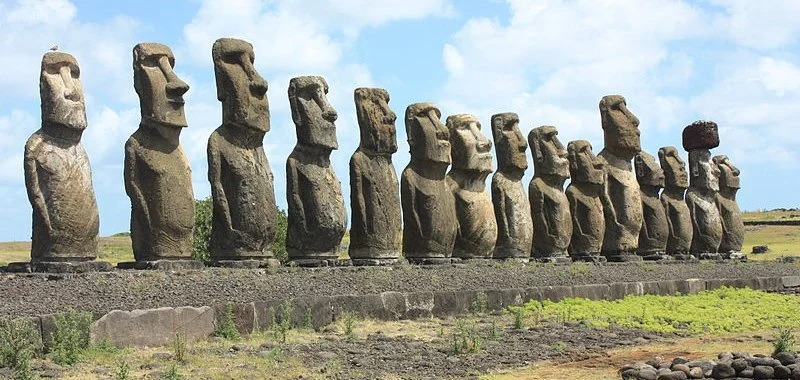
Source: smithsonianmag.com 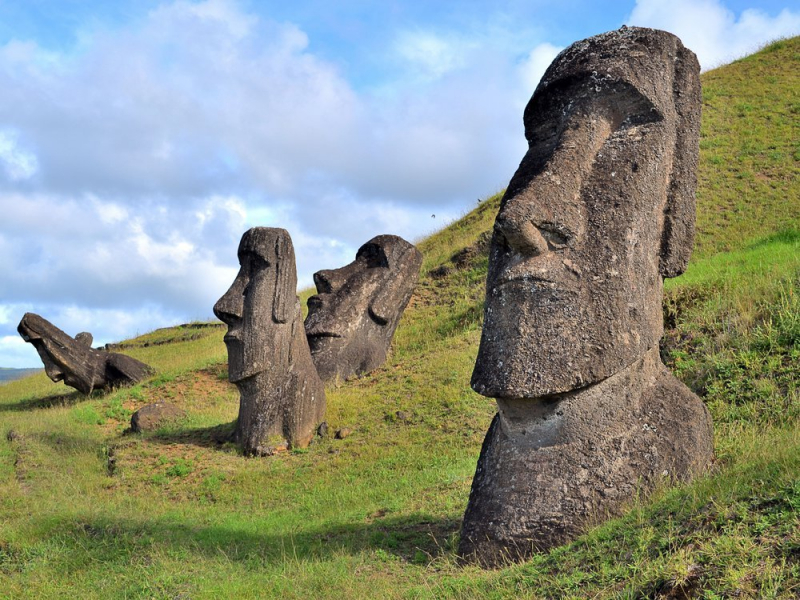
Source: smithsonianmag.com -
From about 700 CN until Europeans are exposed and colonial, most of the Southeast and between the American continent is the homeland of an agricultural civilization called the Mississippians. One of their largest cities, Cahokia, is located near Collinsville, Illinois today. Estimated six square miles wide, Cahokia has a massive central square, large soil pyramids, and wooden structures shaped similar to Stonehenge used to monitor the stars. Some estimates of Cahokia's population are 40,000 people, with many people living in villages outside the main city. Like other mysterious lost civilizations that once existed, experts do not know for sure what led to the gradual destruction of the Mississippi. Common theories suggest that decline is the result of environmental degradation or hunger and disease due to poor hygiene conditions.
A long time before Europeans came to North America, the people called the Mississippians built a great city surrounded by giant earthen pyramids and a structure like Stonehenge made of wood to follow. Monitor the motion of the stars. Called Cahokia today, people can still see what is left in Illinois. At its peak in the range of 600-1400 AD, the city stretches on an area of 6 square miles and has nearly one hundred mounds as well as a huge large square in its center. Its population can be up to 40,000, and some of them will live in remote villages. The people of this great city, the largest up to now to the north in Mesoamerica, are talented artists, architects, and farmers, creating incredible works of art with shells, copper, and stone. They even shifted a branch of the local Mississippi and Illinois rivers to suit their irrigation needs.
- Time: 600 - 1400 AD
- Location: American Southeast and Midwest
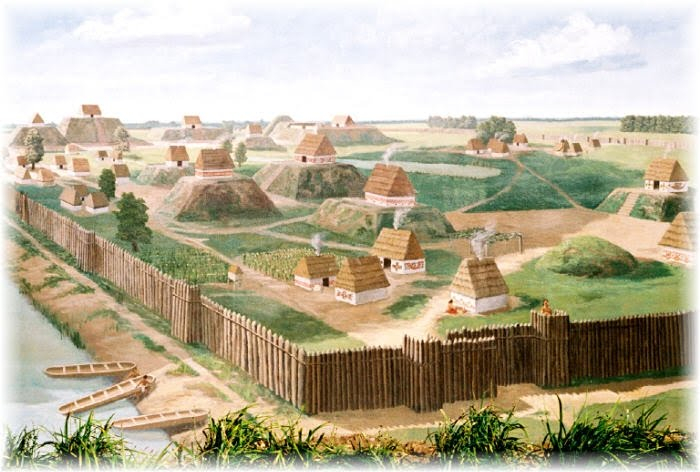
Source: timeline.mdah.ms.gov 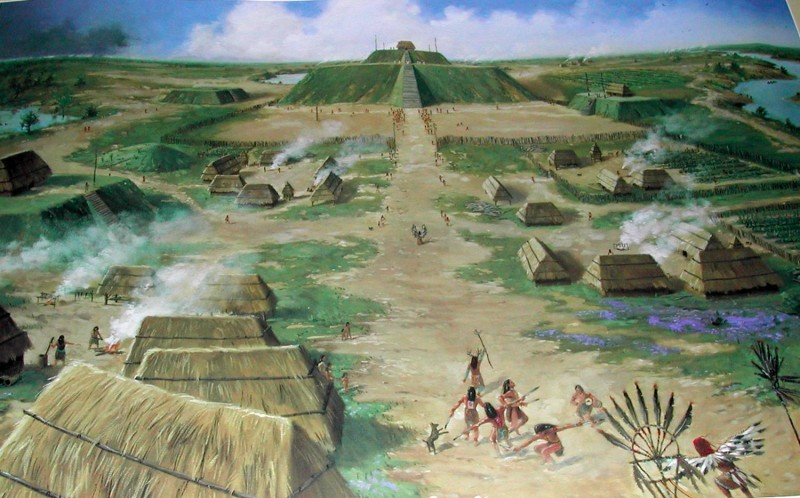
Source: archeology.uark.edu -
Minoan civilization has not been discovered until the beginning of the 20th century, but from there, many clues of this fascinating civilization have existed for about 7000 years and reached the peak of about 1600 BC. Over time, cities and palaces were built and rebuilt more and more complicated. One of them is the Knossos palace, the maze associated with the legend of King Minos (from which the civilization is named). It is now an important archaeological center. Dedicated to life on Crete, they reached their peak in 1600 BC but later shook by a series of natural disasters, starting with earthquakes and erosion from there. The Knossos palace belongs to the Minoans and is a great stop if visitors near Greece. So this deserves one of the mysteriously lost civilized that once existed.
In Minoan civilization, the first Minoans spoke a language called Linear A, later replaced by Linénaire B, both based on imaginary characters and today have not been decoded. It is believed that the Minoan was wiped out by a volcanic eruption on Thera Island (Santorini today). There is evidence that they can survive, not an eruption that killed all plant life. It causes famine and damages their ships, leading to economic decline. Another theory of this is that they were invaded by the Myceneans.
- Time: 3000 - 630 BC
- Location: Crete
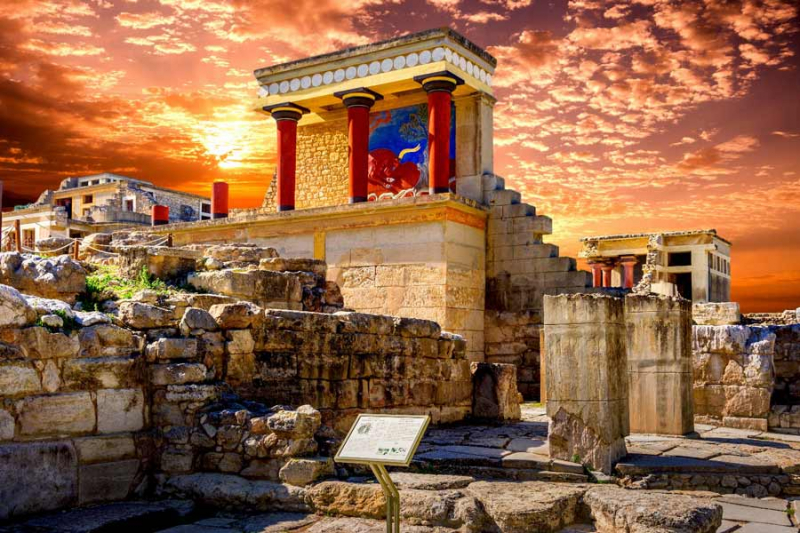
Source: ancient-origins.net 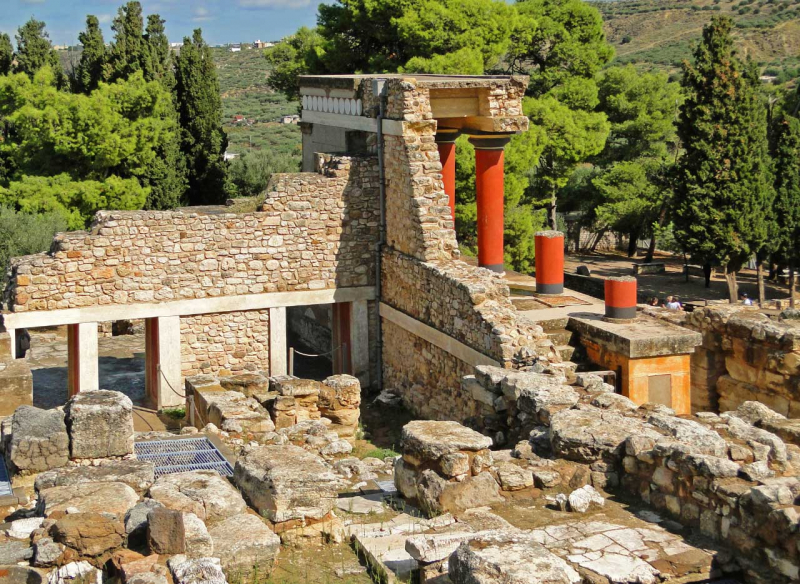
Source: minoanhomes.com -
The Empire of Aksum started its first century AD in the area where Ethiopia is now located. Legend has it that this is the birthplace of the Queen of Sheba. Aksum is an important commercial center, where ivory, resources, agriculture, and gold for the Roman and Indian Empires. It was a wealthy society and the first African culture to issue its own currency, this currency at that time was a sign of great power. The Roman Empire mainly worked with another great superpower at that time, the Indian Empire. Both of these giant bodies trade a lot with the unknown Aksumites.
During the Empire of Aksum, the most special monuments were Aksum beer, and the huge carved towers acting as a funeral docks for kings and nobles. The first Aksumite worships many gods, the god is Astar. Later, in 324, King Ezana II converted to Christianity and became Aksum so it was a fierce Christian culture. According to local legends, a Jewish Queen named Yodit defeated the Aksumite empire and burned the church and books. Others believe it is a foreign queen Bani Al-Hamwijah will cause the decline of the empire. Other theories suggest that climate change decline and too much land use lead to famine. Aksum is on the list of the greatest civilizations that mysteriously lost civilized that once existed.
- Time: 100 AD
- Location: Ethiopia
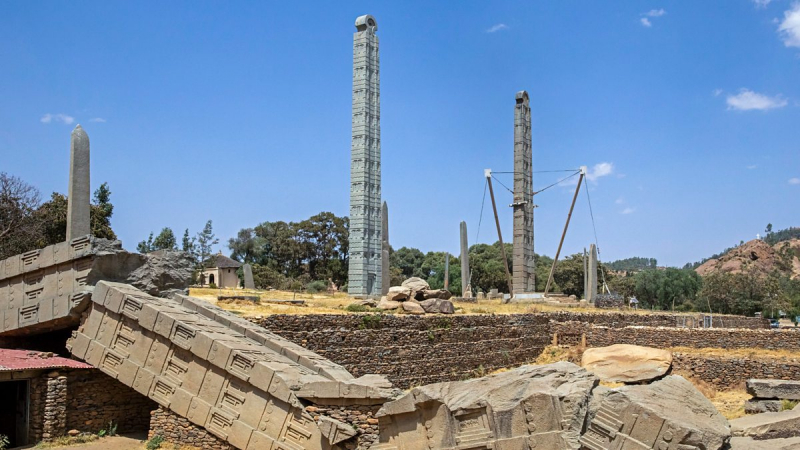
Source: weaponsandwarfare.com 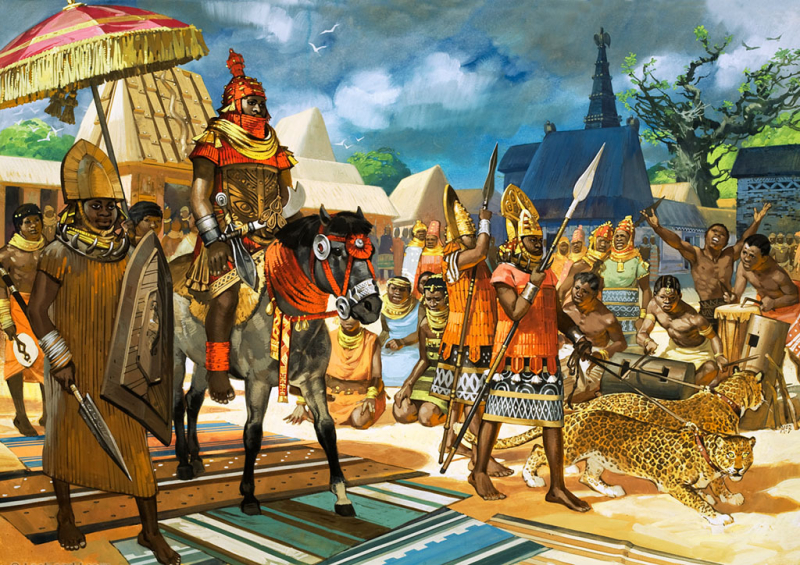
Source: thoughtco.com -
The Nabataean civilization has developed strongly in southern Jordan, the Canaan region, and Northern Arabic from the 6th century BC. The Semitic people built a spectacular Petra city, carved into the sandstone cliffs of the Jordan mountain range. The researchers also knew about their talents in the hydraulic field and their complex dam, canal, and reservoir systems that allowed them to develop in a desert. This is a strongly developed civilization thanks to the geographical location that allows them to create a network of ivory, silk, spices, precious metals, gems, flavors, sugar, perfumes, and medicine. Unlike other civilizations at that time, the Nabataeans were not aware of slavery and each contributed to the city's duties.
During the 4th century BC, the Nabataeans left Petra and no one knew why. Archaeological evidence shows that they leave without a rush, which shows that they have not fled before the invaders. It is believed that the migration to the north occurs to find better jobs. Instead of disappearing mysteriously, it knows exactly what happened to Nabateans. They were influenced by the expansion of Rome, ruled, and disintegrated by many cultural events. Therefore, this is a mysterious lost civilization that once existed.
- Time: 600 BC
- Location: Jordan
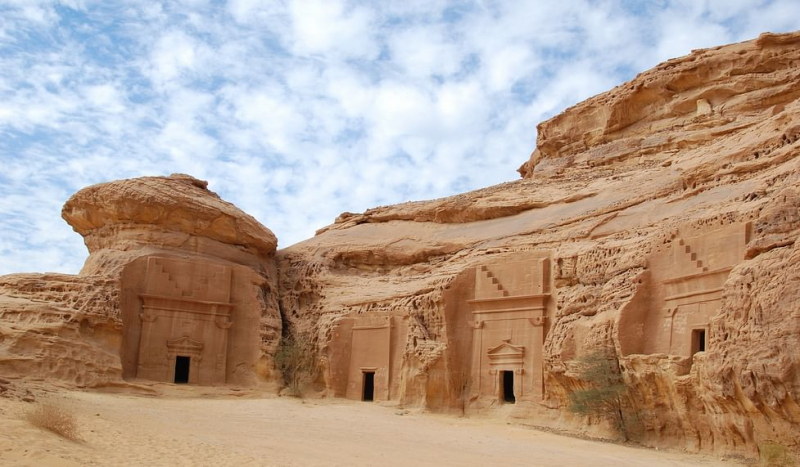
Source: worldhistory.org 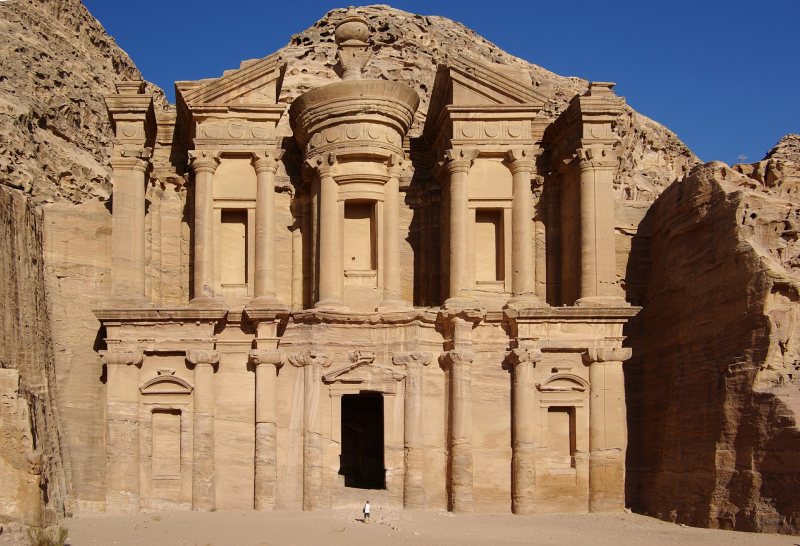
Source: byzantinemporia.com -
The center of South Turkey today was the homeland of one of the oldest cities in the world - Çatalhöyük, mysterious lost civilizations that once existed. It is part of a large civilization growing from 9,000 to 7,000 years ago and then suddenly disappeared. What makes Çatalhöyük unique is its similar structure - the houses built next to each other and go through the holes on the roof, can be approached with a ladder and aerial path. Although humans have disappeared for a long time, they still leave a lot of items about their lives and rituals.
Often called the oldest city in the world, Çatalhöyük is part of agricultural civilization and building a big city from 9,000-7,000 years ago. The interesting thing about Çatalhöyük is its structure, completely unlike most other cities since then. It has no sugar as we know, and instead is built like a honeycomb, with houses built next to each other and going through the holes in the roof. It is believed that people grow everything from wheat to almonds outside the city walls, and come to their homes with ladders and sidewalks passing through their roofs. Typically, these people decorate their entrance to the cowboy and bury the bones of their honor below the packaging dirt on their floor. This civilization is before the iron and unknown period, but they still leave rich evidence of a sophisticated society, full of art and public rituals, which may have existed for 10,000 years in a lot.
- Time: 6700 BC
- Location: South-central Turkey
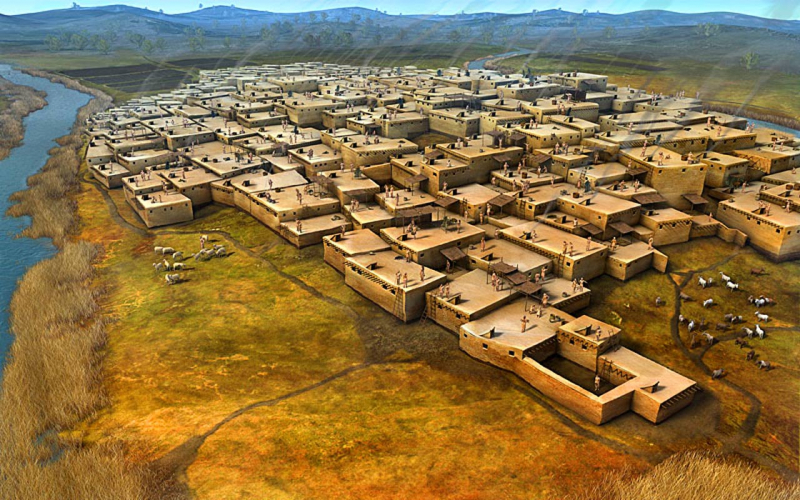
Source: sci.news 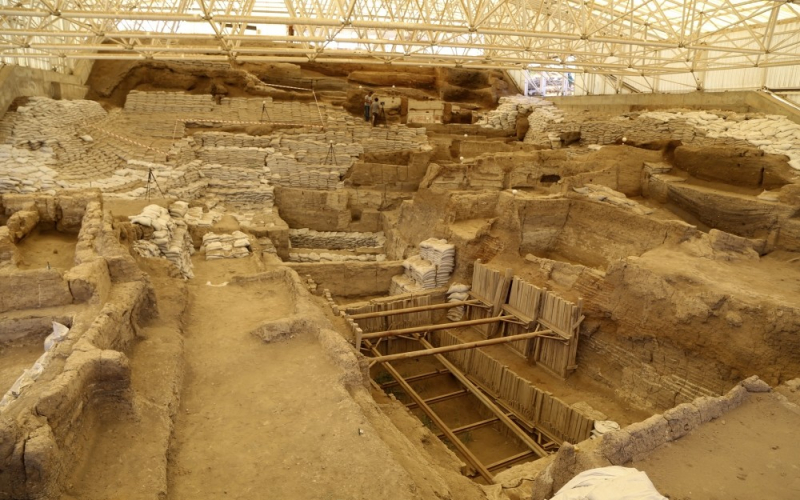
Source: scientificamerican.com -
The first traces of Olmec civilization were from 1400 BC. In San Lorenzo, one of the three main centers of Olmecs with Tenochtitlan and Potrero Nuevo. Having resided in the tropical area of Mexico, Olmec is an evil group tending to support human sacrifices and blood. Although evil, they also tried to invent a writing language, which is likely to have been before the Phoenicians. They tried to determine the number "0", a breakthrough concept in math at that time. The foundation of almost all Mesoamerican cultures is natural disasters or maybe their own reckless agricultural forms that have destroyed them.
During the period of the Olmec civilization, Olmecs were master manufacturers. People find in these places the big monuments of giant stone heads. This civilization laid the foundation for all Mesoamerican cultures later. It is believed that the Olmecs are the first to develop the writing system, they may have invented the compass and Mesoamerican calendar. They know the use of blood, the sacrifice of people, and inventing the concept of zero. This civilization has not been discovered by historians until the middle of the 19th century. Climate change is caused by volcanic and earthquake eruptions or may be caused by harmful agricultural activities. This is the mysterious lost civilization that once existed.
- Time: 1400 BC
- Location: Mexico
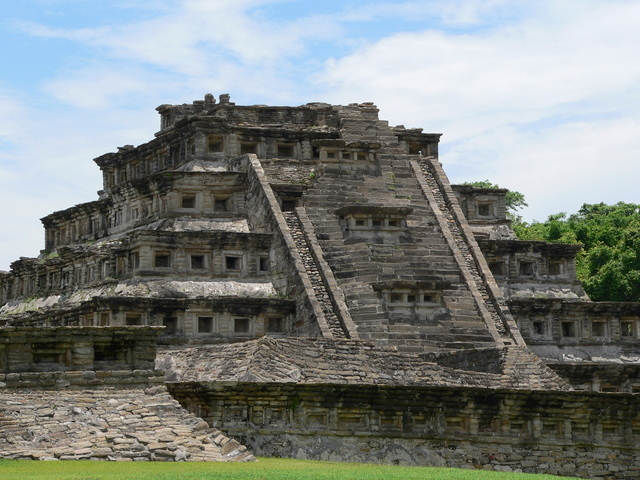
Source: ancient-origins.net 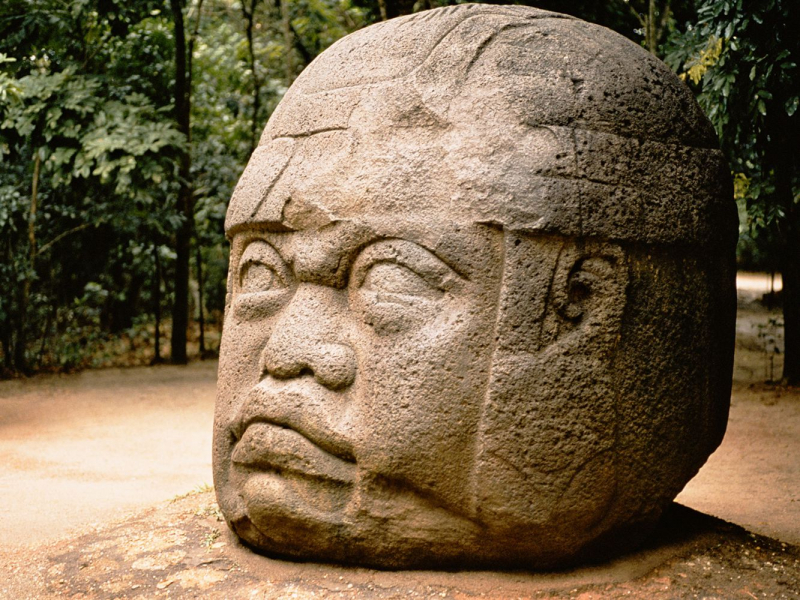
Source: thoughtco.com














